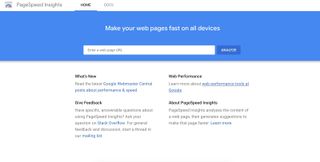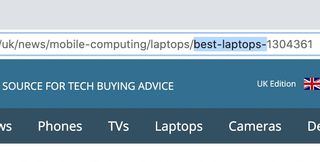10 essential SEO tips and tricks for business websites (and how they benefit you)
The easiest and most effective ways for businesses to rank higher on search engines

Search engine optimization, or SEO for short, is crucial to any business that wants to reach people online. However, the amount of advice out there can make it seem like an incredibly complex field, filled with different strategies and recommendations.
To make things simpler, we’ve provided you with the 10 most essential SEO tips and tricks for business websites. Properly utilized, this list can help boost your search ranking and the amount of traffic heading to your site.
1. Pick longer keywords

It might be tempting when deciding on keywords to pick short, catch-all terms to reach the largest possible audience. However, you’ve got to consider user intent. Someone who types “cars” into Google, for example, might be looking for the kids’ movie, images of cars, a comparison website, or something else—it’s hard to tell. But by choosing “red Subaru cars” as your keyword, you know that whoever is searching for that specific product will almost certainly be interested in your site.
And the benefits go beyond simply attracting more relevant traffic. The interested users that enter your site will likely have a lower bounce rate (they’ll read for longer), in turn boosting your search engine ranking and driving further traffic.
2. Improve your site load time

Many studies have demonstrated that users expect sites to load rapidly, and search engines also favor quick loaders in their algorithms. If you're not sure whether your site is quick or slow, Google PageSpeed Insights offers a good breakdown of your load times.
There are lots of methods to make your site quicker, including reducing the size of images on your site, removing unnecessary plug-ins, and lowering the number of redirections. Perhaps the easiest way, though, is by turning on caching, which temporarily stores sections of your site on the user’s browser.
Site load time can be a bit of a technical labyrinth, so consider contacting a web designer if, after taking these steps, your Google PageSpeed still contains red flags.
Get daily insight, inspiration and deals in your inbox
Get the hottest deals available in your inbox plus news, reviews, opinion, analysis and more from the TechRadar team.
3. Secure your site

One of Google’s main aims is to keep browsers secure, and since 2017 it awards a higher rank to those sites that have “HTTPS” at the front end of their URL. This is because the final “S” refers to how the site utilizes SSL to safely communicate across the web. Indeed, Google Chrome will flag sites as insecure if they don’t use SSL.
There are other reasons to switch over to HTTPS from HTTP. If your business sells products online, it is a necessary security measure to keep your customers’ data safe from malicious attacks. Also, Google Analytics can provide more detailed information to HTTPS sites about where their traffic is coming from.
4. Get your users engaged

It might sound obvious, but offering genuinely engaging and interesting content on your site will also help improve your SEO. Google ranks sites with low bounce rates and higher reading times more highly because it means your site offers valuable information.
There are lots of straightforward ways to do this. If you're selling a visual product, interesting, high-quality images will keep users’ eyeballs on your page. If you're writing about the product or trying to sell something more intangible, avoiding fluff and engaging users from the very first sentence is vital.
5. Spread your keywords far and wide

Once you’ve picked a keyword that doesn’t have a huge amount of competition but still draws sufficient traffic, it’s time to place it in your site. There are lots of places it can be positioned to help inform search engine algorithms that your page is relevant for browsers, for instance, in the file names of images that you upload to your site. Including the keyword in the URL of a post can also help—www.softwarecompanyXYZ/best-time-management-software will be preferred to www.softwarecompanyXYZ/2738unch2y!, for example.
6. Double down on social media

There are two reasons why having an active, and hopefully far-reaching, social media presence can help your SEO ranking.
Firstly, many people nowadays use social media like a search engine. One might search Twitter, for example, to find out about breaking news. Even if your business sells a niche product, you can still get involved in the conversation. Ben and Jerry’s, for example, has recently been commenting on issues surrounding asylum seekers.
Secondly, your social media profiles will rank on Google and could become your top search listing if they are sufficiently popular. Add to this that third party links to your content can help boost your ranking further, and getting on social media seems a no-brainer.
7. Format content to appear in a Google Featured Snippet

Google introduced Snippets back in 2014, and they provide a response to queries directly on the search engine’s results page. To get a Featured Snippet, you’ll need to rank highly for your search keyword. It’s easiest to get a snippet for a clearly designated question that people are likely to ask—try to think like your potential customers and audience. If you run a car company, for example, consider writing a blog post on your site called “How many miles until I need a new CAM belt?” or something similarly specific.

When Google first launched its algorithm, it was novel because it favored sites that other sites linked to rather than according to popularity. That’s to say, if your site was recommended by others, it viewed this as a sign of credibility. And even today, sourcing external links is arguably the most effective way to improve your business’ search ranking.
There are various ways to achieve this, but the easiest is by simply creating gold-standard content that people want to share. Otherwise, consider getting into “link building,” where you hone your content to be link-worthy by other sites and then reach out and ask if they would be interested in linking to it.
9. Make your site mobile friendly

Nowadays, the majority of web traffic comes from mobile devices, so it’s imperative your site is mobile-friendly. When designing your website, ensure that your developer or site builder creates a mobile version as standard and understands what aspects of your business need to be emphasized from the landing page. After all, there is less real-estate on smaller screens, and you don’t want to sacrifice your bounce rate by showing sub-optimal content.
10. Avoid flash

Flash-run websites can produce exciting, eye-catching results, but using them they can be risky for your search ranking. Google’s ranking views Flash unfavorably because it can’t link to a particular page, so be cautious before going down that route.
I am a London-based writer with work in many national titles, trade publications and magazines. I have extensive in-house and agency copywriting experience across many industries, specialising in tech, entertainment, and current and consumer affairs. I am passionate about the work of Heung-Min Son.

